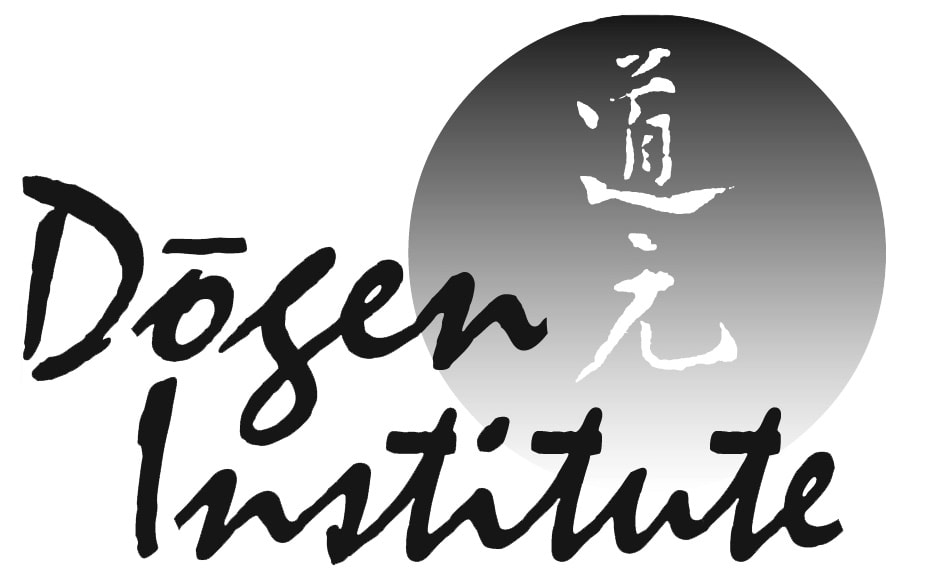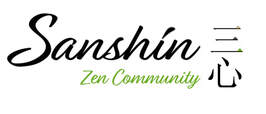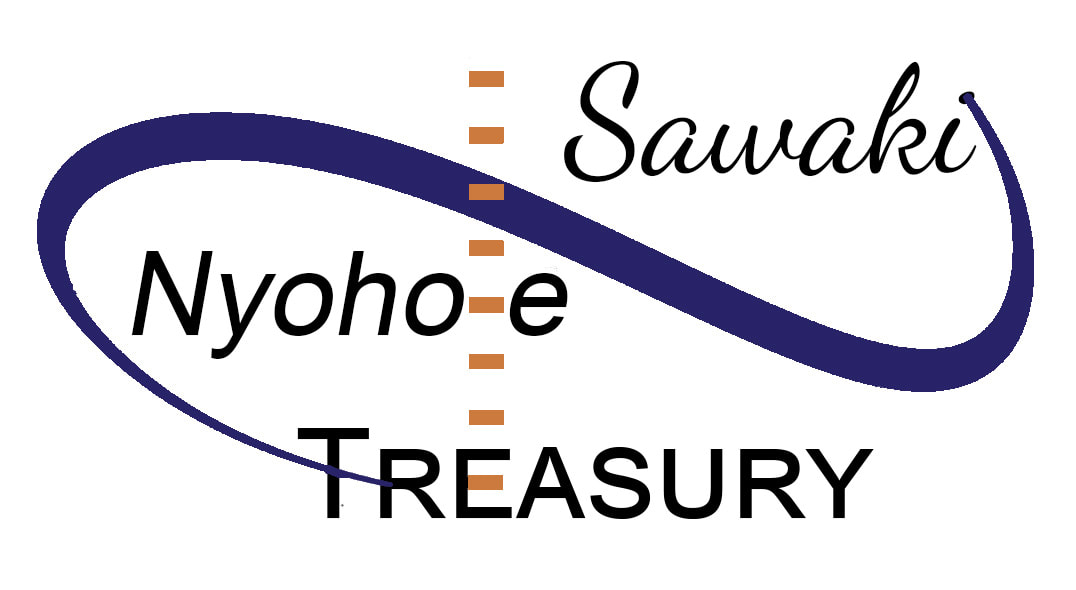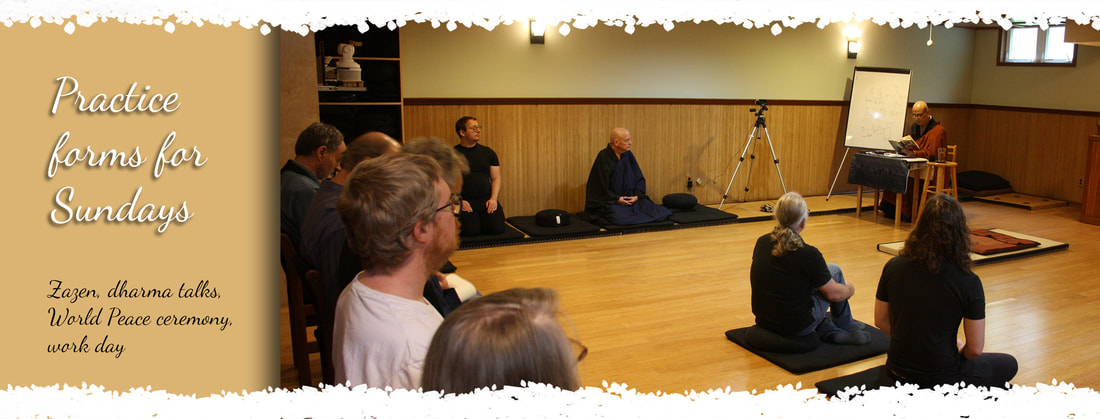This page tells you about the forms we follow here on Sunday mornings for zazen, dharma talks, World Peace ceremony and work days.. The forms themselves are not as important as the opportunity they give us to put aside self-involvement and pay attention to our actions in and around the zendo. Please ask questions about things you don’t understand so that you feel comfortable practicing here. Do your best to follow along with what’s happening, but don’t worry about making a mistake. All practitioners were once beginners too.
Zazen
World Peace ceremonyOn the Sunday closest to the 15th of the month, we do a short service following the dharma talk.
|
Dharma talk
Work dayOn the second Sunday of the month we engage in work practice rather than hearing a dharma talk.
|
A few more things to know
|
Printable version of this information as a trifold brochure
| ||||||





